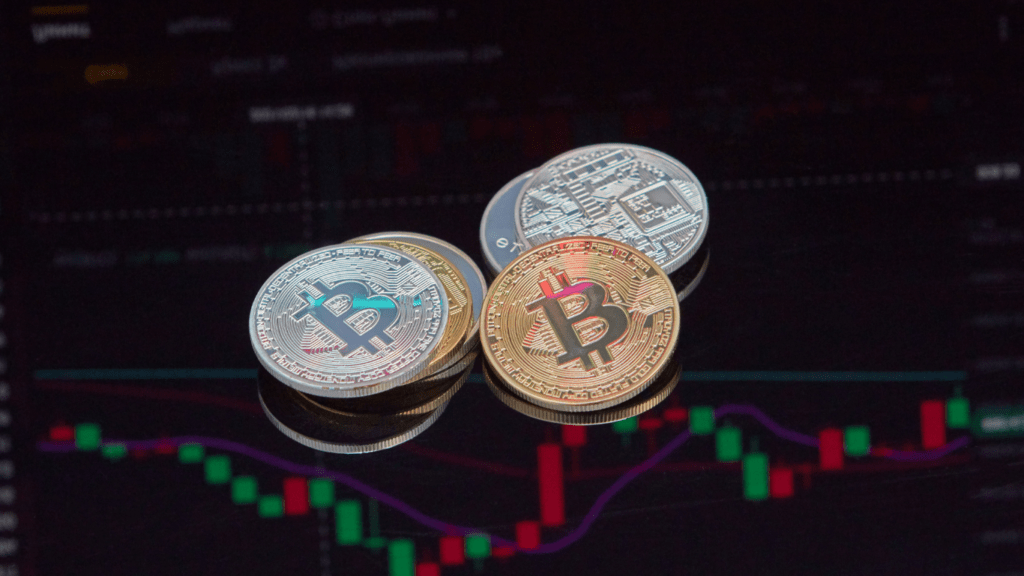Navigating the world of cryptocurrency security can be daunting, especially when deciding between cold storage and hot wallets. As an experienced blogger in the fintech space, I’ve delved into the nuances of safeguarding digital assets.
When it comes to protecting your investments, understanding the difference between cold storage and hot wallets is crucial. In this article, I’ll explore the contrasting features of cold storage and hot wallets to help you make an informed decision about the security of your assets.
With cyber threats on the rise, knowing which option offers better protection is essential for any crypto investor. Stay tuned to discover the safest way to store your digital wealth.
Understanding Cold Storage and Hot Wallets
Exploring the concepts of cold storage and hot wallets is crucial for safeguarding your cryptocurrency investments effectively. As someone deeply entrenched in the world of fintech blogging, I’m here to shed light on these storage methods and empower you to make well-informed choices for protecting your digital assets amidst the escalating cyber threats.
Security Features of Cold Storage
When it comes to safeguarding your cryptocurrency assets, cold storage offers robust security features that make it a preferred choice for many investors like myself. Let’s delve into the key security aspects of cold storage that set it apart from hot wallets:
Offline Storage
In cold storage, I store my cryptocurrencies offline, disconnected from the internet, reducing the risk of hacking or unauthorized access. By keeping the private keys in an offline environment, I ensure that cyber attackers have minimal chances of compromising my assets.
Offline storage adds an extra layer of protection, making it highly secure for long-term asset storage.
Multisignature Support
One key security feature of cold storage is multisignature support, which requires multiple signatures to authorize a transaction. In my experience, this feature enhances security by adding an extra level of validation before any funds are moved.
By setting up multisignature wallets, I ensure that even if one key is compromised, my assets remain safe due to the additional signature requirements.
Security Features of Hot Wallets
In contrast to cold storage, hot wallets offer convenience and quick access to your assets. While they may not provide the same level of security as cold storage, hot wallets have their own set of features that cater to users who require frequent transactions and accessibility.
Convenience and Accessibility
Hot wallets are known for their ease of use and accessibility, making them ideal for traders and individuals who need instant access to their cryptocurrency holdings. With hot wallets, I can quickly initiate transactions and manage my assets without the need for time-consuming steps, such as retrieving a physical storage device.
Real-Time Transactions
Hot wallets excel in facilitating real-time transactions, allowing me to swiftly send and receive cryptocurrencies whenever needed. This feature is particularly beneficial for users engaged in active trading or those who prioritize quick transfers over enhanced security measures.
Integration with Exchange Platforms
Many hot wallets seamlessly integrate with exchange platforms, enabling direct trading within the wallet interface. This integration streamlines the trading process for me, eliminating the need to transfer assets between different accounts and platforms, thus enhancing efficiency and user experience.
Multi-Platform Support
Hot wallets often support multiple devices and platforms, allowing me to access my assets from various sources such as desktop computers, smartphones, and web browsers. This versatility ensures that I can manage my cryptocurrency portfolio on-the-go, enhancing flexibility and convenience in asset management.
Enhanced User Experience
The user interface of hot wallets is designed for simplicity and user-friendliness, offering an intuitive experience for both novice and experienced cryptocurrency users. The straightforward design and functionality of hot wallets make them accessible to a wide range of users, promoting ease of use and seamless asset management.
Constant Connectivity
Hot wallets maintain a constant connection to the internet, enabling immediate access to the blockchain network for transactions and account management. This continuous connectivity ensures that I can interact with my assets in real-time, making hot wallets a practical choice for users who prioritize speed and accessibility in their cryptocurrency operations.
Risks Associated with Cold Storage and Hot Wallets
Exploring the risks associated with both cold storage and hot wallets is crucial for understanding the security implications of these cryptocurrency storage methods.
Cold Storage Risks
- Limited Accessibility: Cold storage, while highly secure due to being offline, may pose challenges in accessing assets quickly for frequent transactions.
- Human Error Vulnerability: As cold storage often involves physical devices like hardware wallets or paper wallets, the risk of loss or damage due to human error exists.
- Theft and Physical Damage: Although cold storage protects against online hacking, physical theft of the storage device or damage to it can compromise assets.
- Recovery Complexity: In the event of loss or damage to the cold storage device or backup, recovering the assets can be a complex and time-consuming process.
- Online Vulnerabilities: Hot wallets, being connected to the internet for real-time transactions, are susceptible to online attacks, including hacking and phishing attempts.
- Exchange Vulnerability: Since hot wallets are often integrated with exchange platforms, any vulnerabilities in the platform can expose the assets stored in the wallet.
- Private Key Exposure: The constant online connectivity of hot wallets increases the risk of private key exposure, potentially leading to unauthorized access and asset theft.
- Security Breaches: In case of security breaches on the device or platform hosting the hot wallet, the assets stored in the wallet can be compromised.
Understanding these risks associated with cold storage and hot wallets is essential for investors to make informed decisions regarding the security of their cryptocurrency assets. Balancing security with accessibility is key in choosing the most suitable storage method based on individual risk tolerance and usage preferences.
Best Practices for Secure Asset Storage
As an experienced fintech blogger, I understand the critical importance of implementing best practices for secure asset storage, especially when it comes to safeguarding cryptocurrency investments. Whether you opt for cold storage or hot wallets, following these guidelines can significantly enhance the security of your digital assets.
1. Utilize Hardware Wallets for Cold Storage
When it comes to cold storage, one of the best practices is to utilize hardware wallets. These physical devices store your cryptocurrency offline, making them highly secure against online threats like hacking and phishing attacks. By keeping your private keys isolated from the internet, hardware wallets provide an additional layer of protection that is crucial for long-term asset storage.
2. Enable Multisignature Authentication
Implementing multisignature authentication is another essential practice for secure asset storage. This feature requires multiple private keys to authorize a transaction, adding an extra level of validation and security. By distributing signing responsibilities across different devices or individuals, multisignature support minimizes the risk of unauthorized access to your digital assets.
3. Regularly Backup Your Wallet
Regardless of whether you use cold storage or hot wallets, regularly backing up your wallet is crucial for safeguarding your assets. In the event of device loss or damage, having a backup ensures that you can recover your funds and access your accounts without any disruptions. Make sure to store backups in secure locations, such as encrypted external drives or offline storage mediums, to prevent unauthorized access.
4. Keep Your Software Up to Date
Maintaining up-to-date software is a fundamental practice for secure asset storage. Whether you are using a hardware wallet or a hot wallet, keeping your wallet software and operating systems updated helps protect against vulnerabilities and ensures optimal security. Developers frequently release security patches and updates to address potential threats, so regularly checking for and installing these updates is essential.
5. Practice Phishing Awareness
Being vigilant about phishing attacks is vital when it comes to securing your digital assets. Phishing scammers often target cryptocurrency users through fraudulent emails, websites, or messages to trick them into revealing their private keys or sensitive information.
By educating yourself and staying informed about common phishing tactics, you can mitigate the risk of falling victim to these malicious schemes and protect your assets from unauthorized access. Implementing these best practices for secure asset storage can significantly enhance the security of your cryptocurrency investments, whether you opt for cold storage or hot wallets.
By following these guidelines diligently, you can mitigate risks, safeguard your digital assets, and make informed decisions to protect your investments in the volatile landscape of cryptocurrency markets.


 Joselito Huntterly has made significant contributions to Lend Crypto Volt by enhancing its technical foundations. With a background in software development and cybersecurity, Joselito has implemented robust systems to ensure the platform's security and reliability. His expertise in emerging technologies has also helped streamline content delivery, ensuring users receive timely updates and insights. Joselito's dedication to creating a secure and efficient platform is essential for users navigating the dynamic world of cryptocurrency.
Joselito Huntterly has made significant contributions to Lend Crypto Volt by enhancing its technical foundations. With a background in software development and cybersecurity, Joselito has implemented robust systems to ensure the platform's security and reliability. His expertise in emerging technologies has also helped streamline content delivery, ensuring users receive timely updates and insights. Joselito's dedication to creating a secure and efficient platform is essential for users navigating the dynamic world of cryptocurrency.